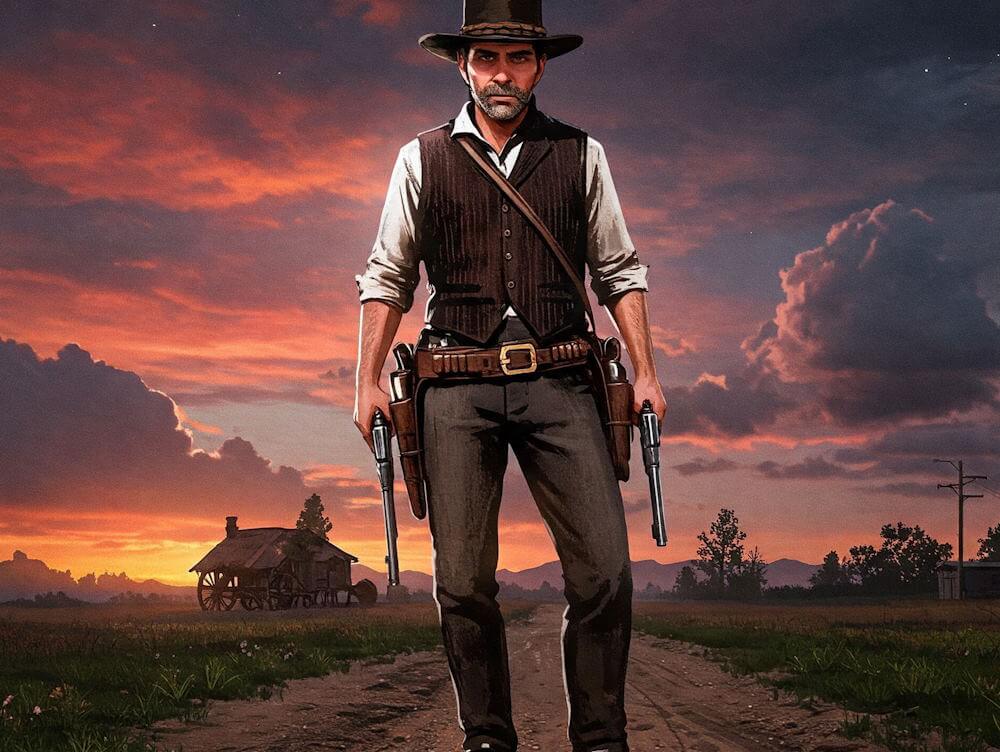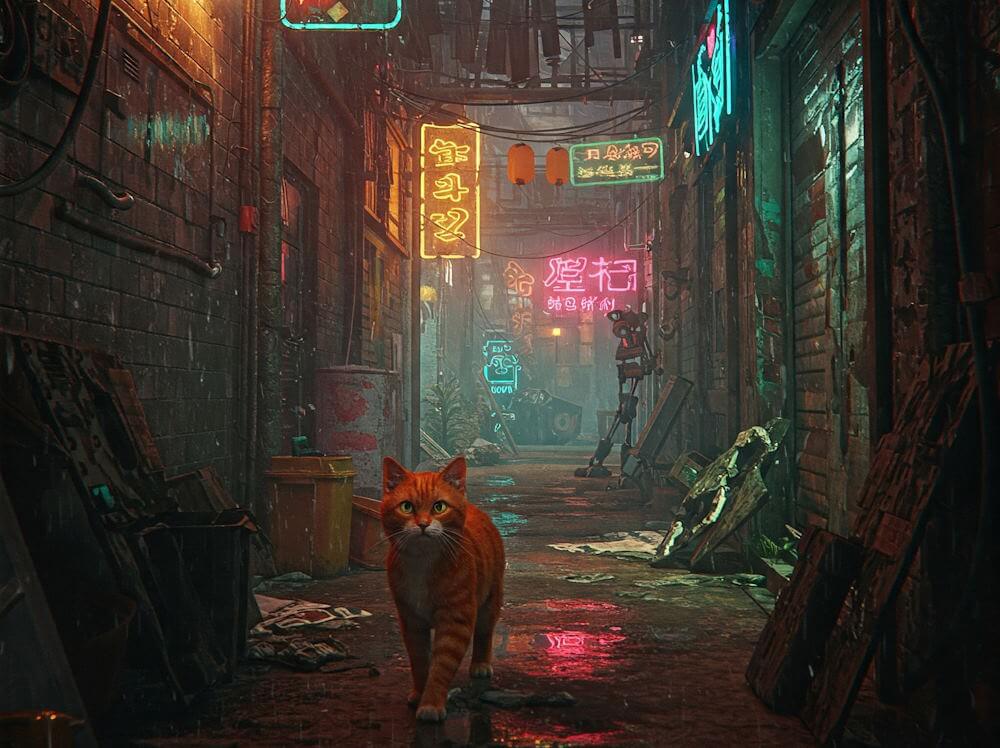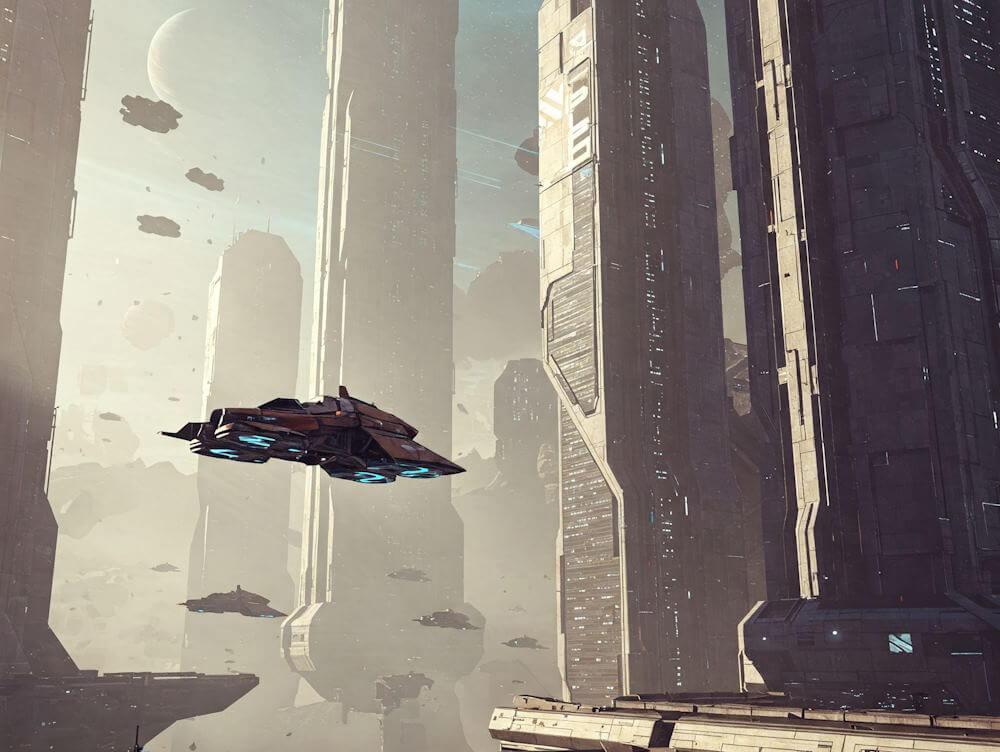Red Dead Redemption 2, developed by Rockstar Games and released in October 2018, is not just a video game; it is an expansive narrative experience set in the fading days of the American Wild West. The game is set in an open-world environment that allows players to immerse themselves in a meticulously crafted world filled with diverse landscapes ranging from snowy mountains to lush forests and bustling towns. This richly detailed setting draws players into a sprawling story that is layered with themes of loyalty, betrayal, and the quest for freedom.
The storyline follows Arthur Morgan, a member of the Van der Linde gang, as they navigate the challenges posed by a changing society and their own internal conflicts. The narrative is driven by key characters, including the enigmatic leader Dutch Van der Linde and the impulsive John Marston, who later appears as the protagonist in the original Red Dead Redemption. These complex relationships and character arcs are pivotal to the game’s emotional depth, attracting both players and critics alike.
Upon its release, Red Dead Redemption 2 received widespread acclaim for its storytelling, character development, and attention to detail, earning numerous awards and setting new benchmarks in the industry. It has been noted for its ability to integrate traditional gameplay mechanics with cinematic storytelling, elevating the video game medium. By presenting themes that resonate on a human level, Red Dead Redemption 2 distinguishes itself from other titles released around the same time, establishing itself as a significant cultural artifact in gaming history. This unique combination of narrative depth, character complexity, and immersive gameplay is what makes it much more than just another video game; it is a landmark in interactive entertainment.
Immersive Open World Experience
Red Dead Redemption 2 is renowned for its meticulously crafted open world, which offers players an expansive and immersive experience that goes beyond mere gameplay. The game’s setting features a vast landscape that includes sprawling plains, dense forests, and towering mountain ranges, all contributing to the breathtaking beauty that players can explore. Each region within this meticulously designed world is distinct, inviting players to traverse different terrains and discover hidden secrets embedded within the environment.
One of the standout features of this game is its dynamic weather system, which plays a critical role in shaping the player’s experience. The weather can shift dramatically, from serene sunny days to torrential storms, greatly affecting visibility and gameplay. This realism enhances immersion, as players must adapt their strategies in response to changing conditions, further deepening their engagement with the world around them. The interaction with the environment is also noticeable; players can observe wildlife, hunt, fish, and even engage with NPCs, all of which enrich the storytelling experience.
Additionally, Red Dead Redemption 2 offers a plethora of side activities that contribute to the open-world experience. Players may find themselves participating in everything from treasure hunts to poker games, or even engaging in random encounters with strangers on the road. Each interaction presents opportunities for players to forge their own narrative within the overarching storyline, creating a personal and unique journey. These activities encourage exploration and enhance the sense of freedom, allowing players to immerse themselves deeper into the game’s rich tapestry of life. Overall, the combination of an expansive world, dynamic weather, and diverse activities ensures that Red Dead Redemption 2 remains an exceptionally engaging and multifaceted experience.
Character Development and Storytelling
Red Dead Redemption 2 is widely recognized for its immersive storytelling and intricate character development, elevating it far beyond the realm of just a game. At the core of this narrative is Arthur Morgan, the game’s protagonist, whose journey mirrors the struggles and moral dilemmas faced by the Van der Linde gang. Players are thrust into a richly detailed open world, where every character exhibits distinct personalities, backgrounds, and motivations, allowing for profound emotional connections.
The narrative arc of Arthur Morgan is particularly compelling, showcasing the evolution of his character through various stages of loyalty, regret, and redemption. Players witness his internal conflicts as he grapples with the gang’s decline and his loyalty to Dutch Van der Linde, the gang’s leader. The game’s storytelling techniques, such as dynamic dialogue and atmospheric cutscenes, serve to heighten the emotional stakes, making every decision feel consequential. The ramifications of player choices are profound, affecting relationships with gang members and the outcome of the story.
The Van der Linde gang itself serves as a tapestry of narratives, each member contributing to the overarching theme of loyalty and betrayal. Characters like John Marston, Sadie Adler, and Dutch Van der Linde are not merely side notes; their development is interwoven with Arthur’s journey, creating a web of interconnected stories that resonate with players. The depth of these characters enriches the gameplay experience and reinforces the idea that decisions have weight—whether through dialogue choices or actions taken throughout the expansive story.
Ultimately, Red Dead Redemption 2 exemplifies the potential of video games as a storytelling medium. Through its nuanced character development and rich narrative, it captivates players, engaging them emotionally and intellectually, proving that the experience is indeed more than just a game.
Moral Choices and Consequences
One of the defining features of Red Dead Redemption 2 is its intricate moral decision-making system, which significantly influences both the narrative and gameplay. Players are continually confronted with choices that can have profound effects on the development of the story, the relationships between characters, and even the broader world in which the game is set. This system invites players to engage deeply with the ethical dimensions of their actions, creating an immersive experience that transcends mere entertainment.
The decisions players make can range from minor everyday choices to significant moral dilemmas, each leaving an indelible mark on the game’s progression. For instance, helping a stranger in need may lead to a positive shift in how other characters perceive the protagonist, Arthur Morgan. Conversely, resorting to violence or betrayal can skew the moral compass of the player’s character, resulting in dire consequences that ripple through interactions and story arcs.
This complexity is reflected in the game’s honor system, which tracks player behavior and affects story outcomes. High honor levels might lead to outcomes that align more closely with traditional notions of heroism, while low honor can result in ruthless and morally ambiguous scenarios. Such repercussions extend beyond immediate gameplay effects, as they reshape character dynamics and alter the player’s journey throughout the narrative, further increasing the stakes of each choice.
Moreover, the game’s environment responds to the ethical decisions, showcasing how actions reverberate throughout the world. Each choice contributes to a richer understanding of the interwoven relationships in this detailed universe, often forcing players to confront uncomfortable truths about loyalty, betrayal, and redemption. The intricate web of morality and consequence ensures that Red Dead Redemption 2 invites players not just to live a story, but to ponder their moral standing within it.
Cinematic Quality and Production Value
Red Dead Redemption 2 stands as a benchmark in the realm of video games, pushing the envelope of what is achievable in terms of cinematic quality and production value. The exceptional visual fidelity is one of the game’s most striking features. Every aspect of the game’s art direction, from the breathtaking landscapes that evoke the American frontier to the meticulously designed characters and environments, contributes to an immersive experience that is akin to watching a high-budget film. Each scene unfolds with a level of detail rarely seen in interactive media, creating a living world that feels authentic and vividly alive.
Animation plays a crucial role in this cinematic experience. The game developers have invested significant effort into making character movements fluid and realistic, enhancing emotional connections with players. For instance, the subtleties in facial expressions during cutscenes or character interactions amplify the storytelling, allowing players to engage more deeply with the narratives of camaraderie, betrayal, and survival. Such meticulous attention to detail ensures that every action feels genuine, further elevating the gameplay beyond mere mechanics.
Furthermore, the game’s audio design is equally impressive. The music, featuring an evocative score, complements the visuals to produce a harmonious blend that captivates players. The sound effects, whether the rustle of leaves in the wind or the distant sound of a train approaching, add layers of immersion, making the world feel tangible. Together, these elements—visual artistry, detailed animations, and a masterful audio backdrop—contribute to a cohesive experience that reinforces Red Dead Redemption 2’s narrative depth and emotional weight. Ultimately, the synthesis of these components facilitates a greater engagement, positioning the game as an unmistakable work of art in the landscape of modern gaming.
Cultural and Historical Context
Red Dead Redemption 2, a game developed by Rockstar Games, offers players an intricate tapestry of historical context that echoes real-life events and societal issues from the late 19th century in America. Set in 1899, this period marked the conclusion of the Wild West era, characterized by the expansion of railroads, the rise of industrialization, and the gradual encroachment on Indigenous lands. The game encapsulates these themes, offering a game environment that serves not only as a playground but as a reflective mirror of America’s evolving identity.
The narrative of Red Dead Redemption 2 is steeped in the consequences of modernization and the decline of the outlaw lifestyle symbolized by the Van der Linde gang. As players traverse the beautifully rendered landscapes, they are confronted with the impact of societal change, including increasing law enforcement presence and the establishment of corporate interests that threaten the existence of free-spirited individuals. This conflict showcases the broader theme of individualism versus collectivism—a hallmark of American identity during that time.
Moreover, the game presents a nuanced approach to cultural representation, depicting various social and ethnic minorities, each contributing to the rich narrative. The complexities of these characters highlight the struggles faced by different groups, including Indigenous peoples and African Americans, who are portrayed with a level of depth that fosters understanding and empathy. By integrating these multifaceted perspectives, Red Dead Redemption 2 compels players to engage with harsh realities, including the displacement of Native Americans and the systemic racism prevalent during the era.
In portraying these significant cultural issues and historical events, the game transcends conventional entertainment, encouraging critical reflection on freedom, morality, and progress in the context of America’s evolving landscape. As such, it becomes a cultural artifact that invites gamers to explore and appreciate the intricate historical tapestry woven throughout its narrative.
Emotional Impact and Player Connection
Red Dead Redemption 2 transcends typical gaming experiences by weaving profound emotional narratives that resonate with players on a personal level. The game meticulously crafts character relationships that evoke a range of emotions, enabling players to forge deep connections not only with the characters but also with the unfolding story. As players immerse themselves in the world of Arthur Morgan and his kin, every interaction and dialogue helps to create layers of emotional complexity that enrich the experience.
Significant moments within the game’s narrative, such as poignant character deaths or moments of camaraderie, resonate deeply with players. These events spark introspective thoughts regarding loyalty, sacrifice, and moral ambiguity. The choices players make throughout the journey contribute to an overarching sense of agency and emotional investment. Players are often left reflecting on their decisions, recruiting emotional responses that may mirror real-life dilemmas and values.
Moreover, the game’s visual and auditory atmosphere greatly enhances its emotional impact. The meticulously crafted landscapes and dynamic weather systems evoke feelings of nostalgia and melancholy, inviting players to pause and appreciate the beauty around them. The haunting melodies of the soundtrack complement key moments, allowing players to feel immersed in the emotional highs and lows experienced by the characters. This atmospheric connection enriches player engagement, leading to a more vivid and heartfelt understanding of the narrative journey.
Ultimately, Red Dead Redemption 2 serves as a reminder that gaming can encapsulate the spectrum of human emotions. By fostering a deep connection to its characters and story, players are not merely passing through a digital world; they are embarking on an emotional odyssey that encourages reflection on their values and personal experiences. This profound emotional impact emphasizes the game’s role as a powerful storytelling medium unlike any other.
Community and Online Multiplayer Element
Red Dead Redemption 2 is not solely defined by its engrossing single-player narrative; its community and online multiplayer aspects significantly enhance the overall gaming experience. Within this expansive universe lies Red Dead Online, a platform where players can connect, collaborate, and create their own adventures. This multiplayer mode offers a continually evolving environment that enriches the gameplay through community-driven content.
Red Dead Online empowers players to form communities, engage in activities, and share their experiences. From cooperative missions to competitive game modes, the online component fosters a vibrant ecosystem where interactions among players lead to new narratives. Players can participate in various tasks such as hunting, treasure seeking, or even engaging in heated confrontations, thus allowing for myriad possibilities. The shared world cultivates friendships and rivalries, which often lead to memorable stories that transcend the original campaign.
The community’s involvement is further evident through frequent updates and seasonal events introduced by the developers. These updates serve to keep players engaged and invested in the virtual world, providing fresh content that continually reshapes player interactions. By integrating seasonal themes and new features, Rockstar Games enables players to explore different facets of the world and reimagine their roles within it. Moreover, the active role of the community in sharing strategies, tips, and narratives fosters an inclusive environment where every player’s experience is valued.
In essence, the multiplayer aspect of Red Dead Redemption 2, characterized by Red Dead Online, is a crucial element that extends the game’s life. Players are not just participants but contributors to a living world that thrives on engagement and creativity. The interdependence between players and the continual evolution of the game’s content highlight why this game is more than just a solitary experience; it is a shared journey through a captivating landscape where stories come alive.
Conclusion: A Game Beyond Gaming
Red Dead Redemption 2 is not just a game; it represents a remarkable convergence of storytelling, artistry, and emotional depth, elevating it beyond conventional gaming experiences. Throughout this exploration, we examined how its narrative intricacies add layers of complexity that are seldom found in typical video games. The character development, particularly of Arthur Morgan, showcases a profound emotional journey, inviting players to engage deeply with themes of loyalty, morality, and the passage of time.
The game’s stunning visual presentation, paired with an immersive audio landscape, creates a rich environment that feels alive and responsive. This artistry is not merely a backdrop but serves as a fundamental part of the storytelling process, illustrating the harsh realities of life within a fading era of the Wild West. By integrating dynamic weather systems, detailed character animations, and realistic dialogue, Red Dead Redemption 2 crafts a world that feels tangible and relatable, allowing players to lose themselves in its vast intricacies.
Moreover, emotional engagement remains a cornerstone of the game, as it embraces moments that encourage introspection. Players are prompted to evaluate their actions’ impact on others, forging connections that resonate well beyond the screen. As a result, Red Dead Redemption 2 becomes a cultural artifact, provoking discussions about ethics, history, and human behavior, thereby appealing to a broader audience than traditional gaming demographics might suggest.
In conclusion, Red Dead Redemption 2 transcends the boundaries of conventional gaming to become a landmark title that inspires reflection and dialogue. It is not only a testament to the evolving landscape of interactive entertainment but also a bold exploration of narrative techniques that challenge player expectations. This remarkable game has undoubtedly carved out a significant space in the annals of both art and entertainment. Its legacy is firmly established, leaving an indelible mark on the gaming industry and culture at large.



